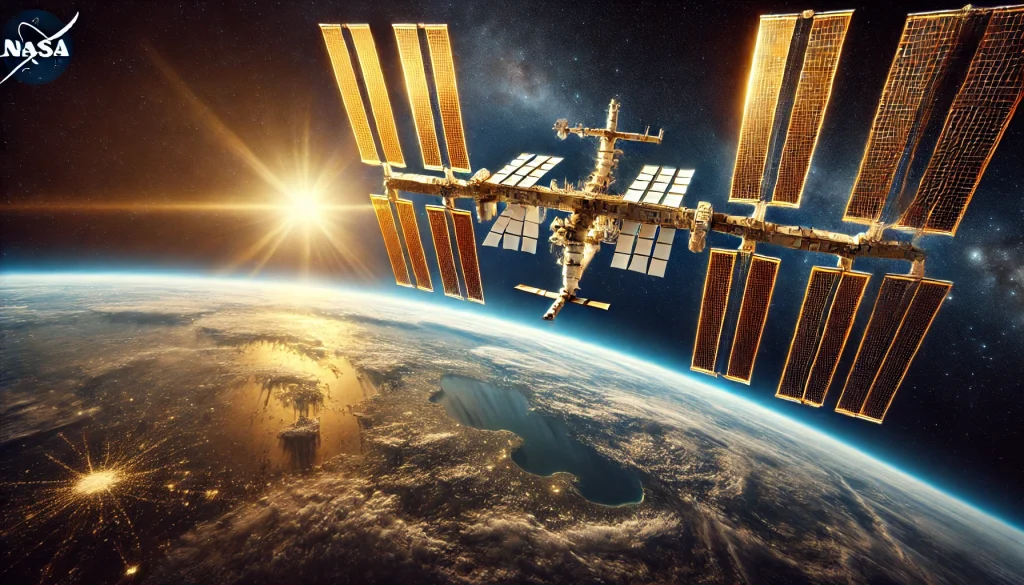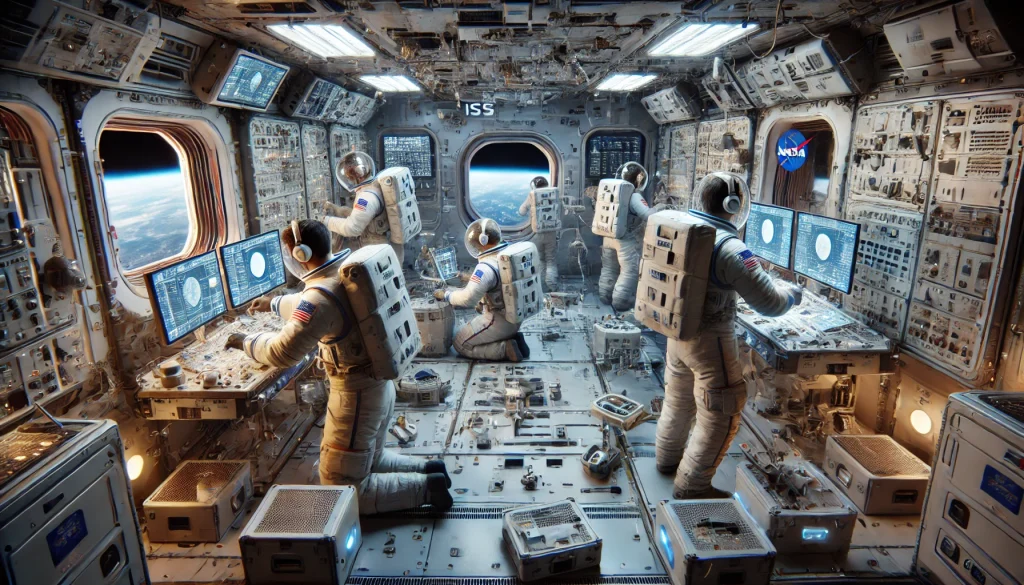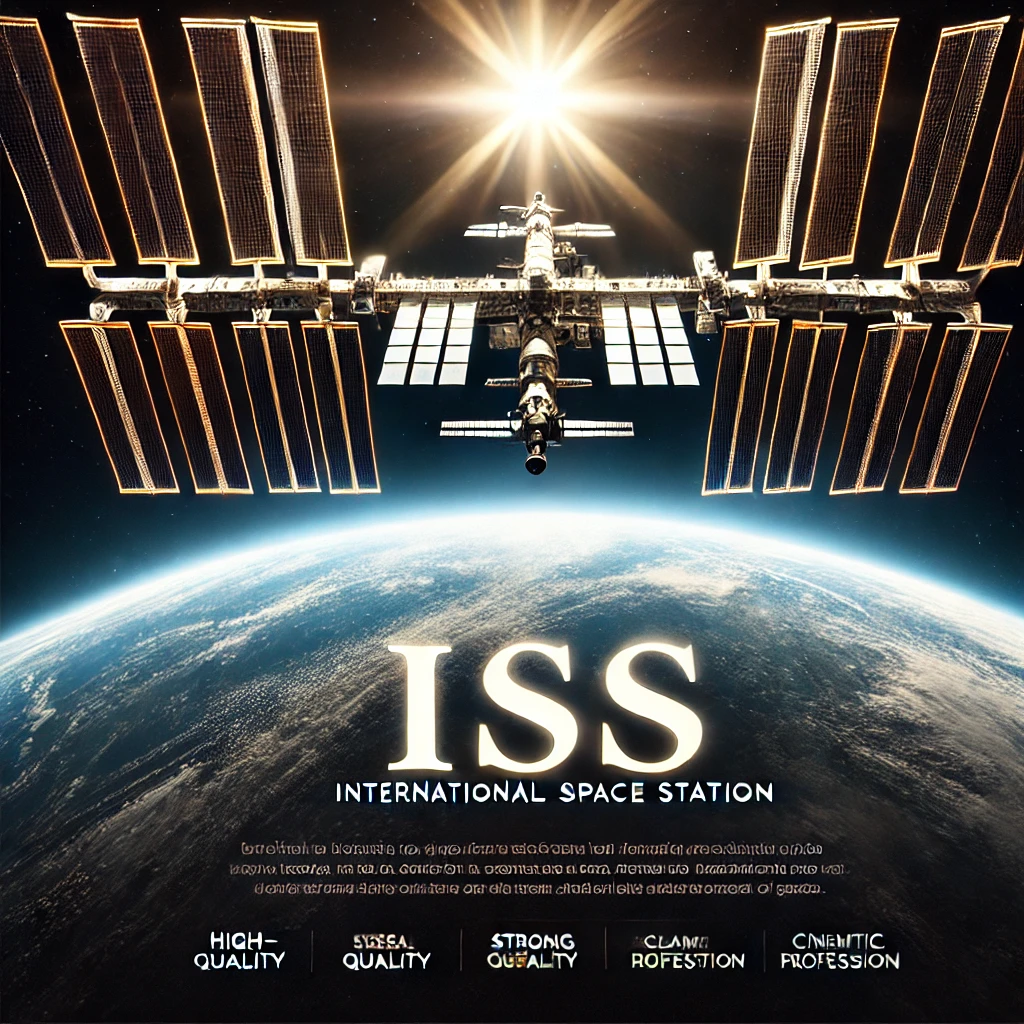The International Space Station
The International Space Station: Humanity’s Cosmic Triumph Unveiled
Buckle up, space enthusiasts! The International Space Station (ISS) isn’t just a speck in the sky—it’s a jaw-dropping marvel of human engineering, a floating laboratory, and a testament to what happens when the world unites for a cosmic cause. Orbiting Earth at a mind-boggling 420 kilometers (260 miles) above us, this colossal structure has been pushing the boundaries of science, exploration, and imagination since its debut in 1998. Ready to blast off into the details? Let’s explore why the ISS is the ultimate symbol of humanity’s reach for the stars!
What is the International Space Station?
Picture this: a football-field-sized, habitable satellite zipping around Earth at 28,000 kilometers per hour (17,500 miles per hour), completing an orbit every 90 minutes. That’s the ISS—a cutting-edge space station built through a powerhouse partnership of five space agencies: NASA (United States), Roscosmos (Russia), JAXA (Japan), ESA (Europe), and CSA (Canada). Since its first module, Zarya, rocketed into orbit on November 20, 1998, the ISS has been a non-stop hub of discovery, hosting over 250 astronauts from 19 countries.

Visible from Earth with the naked eye (yes, you can spot it!), the ISS isn’t just a pretty sight—it’s the largest human-made object in space, a microgravity playground where science fiction meets reality. As of March 19, 2025, it’s still orbiting strong, inspiring dreamers and doers alike.
A Stellar History: How the ISS Came to Be
The ISS didn’t just appear out of thin air—it’s the result of decades of ambition and collaboration. Construction kicked off with Zarya in 1998, followed by a series of meticulously assembled modules over more than a decade. From the U.S.’s Destiny Lab to Europe’s Columbus Module, each piece was launched and connected in space like a cosmic LEGO set. Costing over $150 billion, it’s one of the priciest—and most worthwhile—projects humanity has ever tackled.
Since its first crew arrived in 2000, the ISS has been continuously occupied, making it the longest-running human presence in space. It’s not just a station—it’s a legacy of innovation that’s outlasted its original 15-year lifespan and is now set to shine through at least 2030.
The ISS Unveiled: Structure and Design
The ISS is a masterpiece of engineering, a sprawling network of interconnected modules that make life and work in space possible. Here’s the breakdown:
- Habitation Modules: Cozy (well, as cozy as zero-gravity gets) living quarters where astronauts sleep in floating pods.
- Research Labs: High-tech facilities like NASA’s Destiny and ESA’s Columbus, buzzing with experiments.
- Solar Arrays: Massive panels soaking up the sun’s energy to power the station—think of them as the ISS’s eco-friendly heartbeat.
- Docking Ports: Welcome mats for spacecraft like SpaceX’s Crew Dragon, Russia’s Soyuz, and cargo haulers like Northrop Grumman’s Cygnus.
Orbiting at breakneck speed, the ISS treats its crew to 16 sunrises and sunsets daily. That’s right—every 90 minutes, they witness Earth’s beauty in a way we can only dream of.
Why the ISS Matters: Science in Zero Gravity
The ISS isn’t just a cool hangout—it’s a microgravity laboratory where groundbreaking science happens. Free from Earth’s gravitational pull, researchers unlock secrets that transform life here and beyond. Here’s what’s cooking up there:
- Medical Marvels: Studying how microgravity impacts bones, muscles, and organs, paving the way for safer space travel and better healthcare on Earth.
- Biological Breakthroughs: Growing plants, observing bacteria, and tracking cellular changes to crack the code of life in space.
- Materials Magic: Crafting new alloys and testing fluids in ways that defy Earth’s physics—think next-gen tech!
- Cosmic Gazing: Peering into distant galaxies and studying phenomena like black holes without pesky atmospheric distortion.
From cancer treatments to water purification systems, ISS experiments have delivered real-world wins that prove space isn’t just “out there”—it’s improving life down here.
Life Aboard the ISS: A Day in Zero Gravity
Ever wondered what it’s like to live on the ISS? Astronauts spend six-month missions in a world where up and down don’t exist. Their daily grind includes:
- Running cutting-edge experiments that could change the future.
- Hitting the gym (well, space gym) for two hours to fight muscle and bone loss—zero gravity is no joke!
- Fixing and upgrading the station like cosmic handymen.
- Chatting with mission control and sharing Earth’s stunning views via social media (yes, they’ve got Wi-Fi up there!).
Food? Think vacuum-packed meals and freeze-dried goodies. Sleep? They zip into zero-gravity sleeping pods. Hygiene? Special systems handle everything from showers to waste—no plumbing required. It’s a wild, weightless life at 17,500 mph.
Global Unity and the ISS’s Epic Legacy
The ISS isn’t just a science lab—it’s a shining example of what happens when nations team up. The U.S., Russia, Japan, Europe, and Canada pour funding, tech, and expertise into this orbiting icon. It’s survived geopolitical tensions, budget debates, and the test of time, proving that space exploration can unite us like nothing else.

And the numbers don’t lie: over 3,000 experiments conducted, countless technologies born, and a blueprint for international teamwork that’s out of this world (pun intended).
The ISS Today and Tomorrow: A Cosmic Crossroads
As of 2025, the ISS is still the crown jewel of space exploration. Private players like SpaceX and Boeing are stepping up, delivering crews and dreaming of space tourism. Meanwhile, NASA’s Artemis program uses the ISS as a launchpad for lunar missions, and Mars hopefuls see it as a training ground for the Red Planet.
The plan? Keep the ISS humming through 2030, then hand the baton to commercial stations like Axiom Space’s future habitats. It’s not the end—it’s the start of a new era where space becomes everyone’s playground.
Fun Facts to Wow Your Friends
- Price Tag: $150 billion and counting—worth every penny.
- Spot It: Track it with NASA’s Spot the Station tool and wave as it flies by!
- Crew Count: 6-7 astronauts at a time, living the sci-fi dream.
- Longevity: Built for 15 years, now thriving well past its prime.
Why You Should Care About the ISS
The International Space Station isn’t just for astronauts—it’s for all of us. It inspires kids to chase STEM dreams, fuels tech that makes life better, and proves humanity can do the impossible. Whether you’re gazing up at it or geeking out over its latest discoveries, the ISS is a reminder: the sky’s not the limit—it’s our launchpad.







